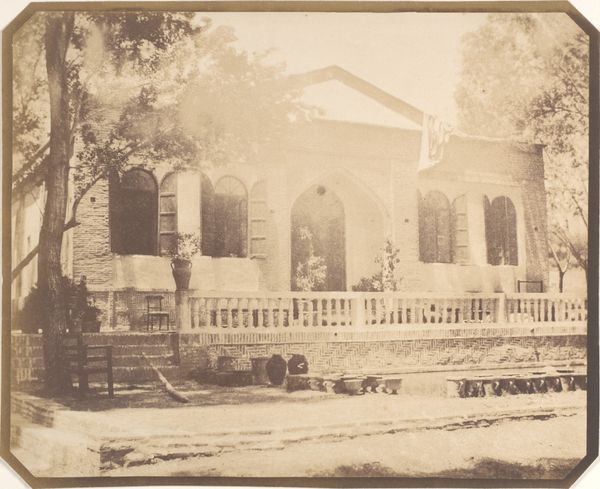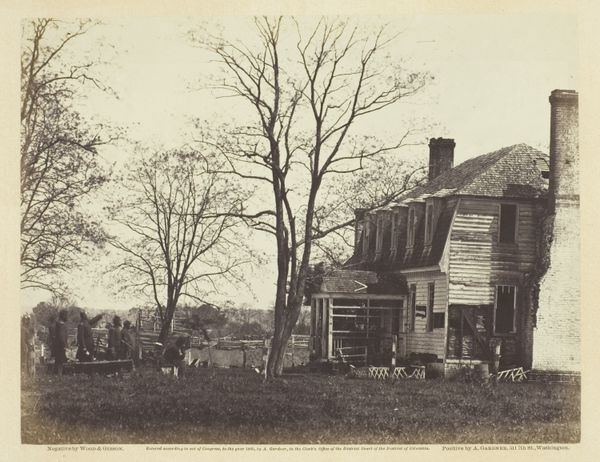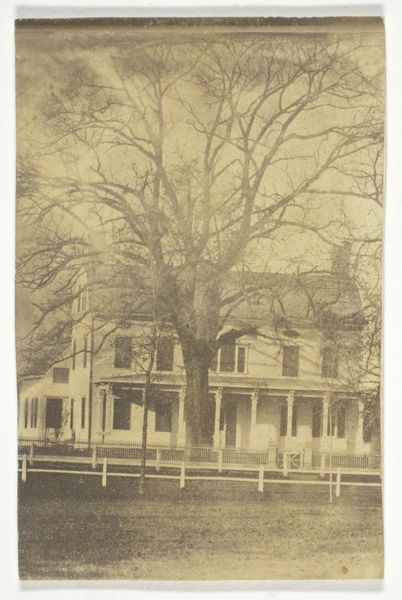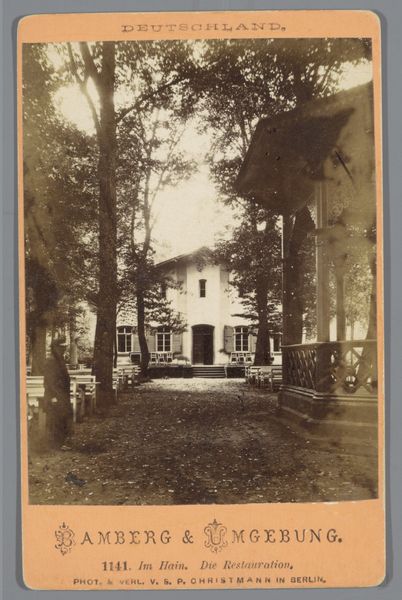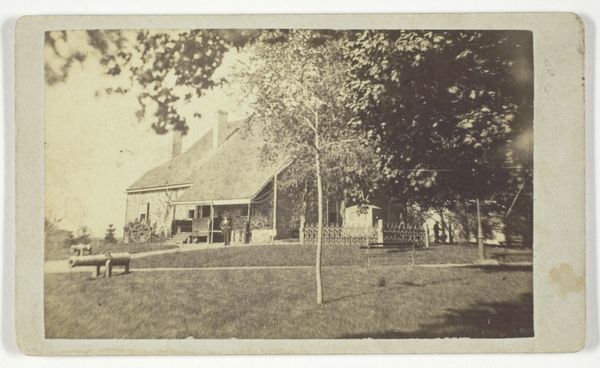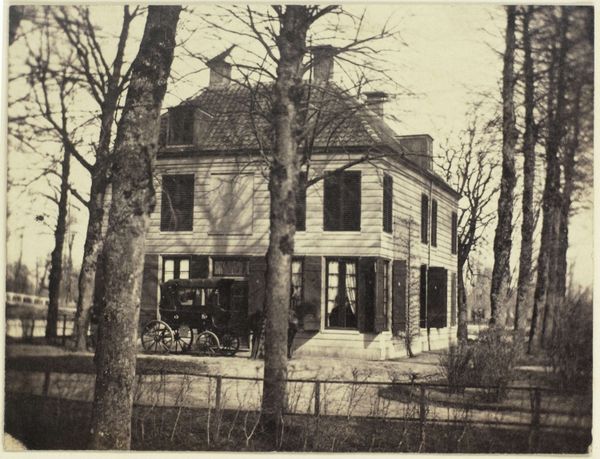
print, photography, site-specific, gelatin-silver-print
#
16_19th-century
# print
#
war
#
landscape
#
photography
#
site-specific
#
gelatin-silver-print
#
united-states
#
history-painting
Dimensions: 17.7 × 23 cm
Copyright: Public Domain
Curator: This gelatin-silver print, taken in 1865, is entitled "Aiken House, on Weldon Railroad, Virginia" by John Reekie, and it resides here at the Art Institute of Chicago. Editor: The immediate feeling is one of stark ordinariness amidst something significant. The soft sepia tones emphasize the stillness and solid geometry of the house. It's almost eerie. Curator: The American Civil War and its aftermath are central to understanding the context. Reekie documented landscapes along key transportation routes, turning an eye towards how war impacts lives at a domestic level. Consider the narratives interwoven within the Aiken House, once a symbol of domestic stability now set against the backdrop of wartime turmoil. Editor: Absolutely. You have to wonder about the material reality. How did the war economy change construction and the availability of resources for houses like this one? The railway was likely a vital transportation route for military supplies, which directly relates the means of living and survival back to this landscape. Curator: Indeed. It’s hard not to think of it through the lens of intersectionality – race, class, gender, and regional tensions playing out right on this site. What sort of people are inhabiting the frame? Editor: The photographic medium is also interesting. Unlike painting, it has this perceived indexical link to the "real." Was it seen as truth? A simple record of place, untouched by ideology? Probably not, and Reekie may well have had his own motivations that we can see by understanding the distribution of resources around it. Curator: A space laden with unseen narratives about societal division, but documented at a specific time for various purposes—what do we take away today when war is always present in society? How is that perceived objectivity connected to truth in photography, a very contested concept indeed. Editor: Considering the ways resources like that railroad enabled both military logistics and economic support to specific societal structures is necessary to understand what it is, how it was built, who made it and why it all is in front of us today in the form of a photograph of the scene. Curator: A scene rendered even more evocative with your sharp awareness to material conditions! Editor: And the context you added enriches a still photo to expose deeper ties to wartime Virginia.
Comments
No comments
Be the first to comment and join the conversation on the ultimate creative platform.

